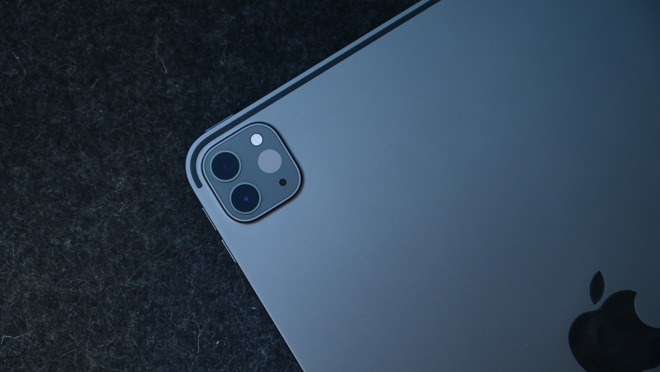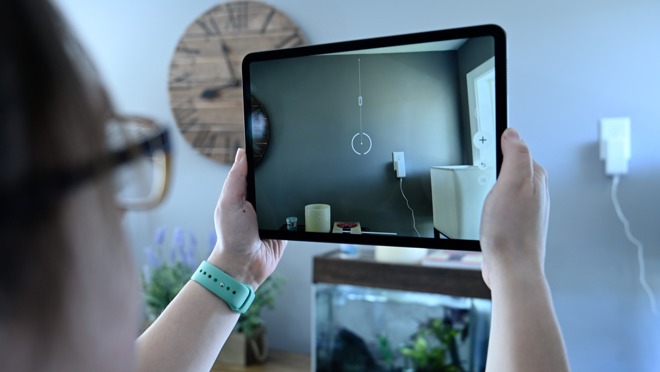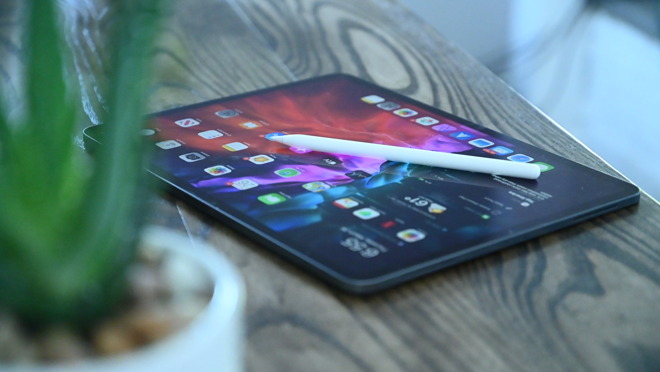iPad Pro 2020 is not Apple’s “dream” iPad
- Tram Ho
Compared to previous generations of iPads, the latest iPad Pro is a technological marvel. It has come a long way, bringing great improvements both in hardware and software. iPad Pro 2020 is indeed the best iPad ever released.
But when compared to the 2018 model, the 2020 model seems to be missing something, causing consumers who are intending to shop for the iPad to have the thought of waiting a bit longer. It took Apple 17 months to launch a new model, but its most notable features include a super wide-angle lens, Wi-Fi 6, and LiDAR sensor. Wi-Fi 6 is only useful if you have a Wi-Fi 6 router, LiDAR sensor does not have a real user interface, and the camera is not very useful unless you use AR or regularly take photos with a tablet.
Which makes us wonder if the iPad Pro 2020 is really the device that Apple plans to launch?
A12Z Bionic processor

The processor on the iPad Pro 2020 is A12Z Bionic. In performance evaluations, it was found that it was almost identical to the A12X Bionic processor that had been fitted to its predecessor two years ago. Two years on, and Apple can't improve its processing power? What a surprise!
Shortly after its launch, several sources confirmed that the A12Z is the same chip as the A12X. A small difference is that the A12Z chip has 8 GPU cores instead of 7, but apart from that, it is indistinguishable.
After two years, with two models, Apple reused the old CPU and GPU with one more core that had been turned off to slightly increase graphics performance. It seems that is not what Apple wants with their latest and most powerful iPad.
Camera of iPad Pro 2020

The improvements related to the camera on the new iPad Pro are not what makes people admire. This camera cluster has been developed for the iPhone 11, and the ultra-wide-angle camera will be useful for augmented reality applications, an area Apple continues to explore.
But the camera cluster on the iPad Pro 2020 has many limitations. The back of the device has 2 cameras, helping Apple bring portrait mode to the iPad. It's understandable – the iPhone 11 has a similar camera setup and can take depth and portrait photos. Why iPad Pro 2020 can not?
In addition, the iPad Pro now has a LiDAR sensor, specialized for depth information acquisition. This sensor is very useful for AR applications, and can also be used for portrait mode, which also needs depth information.
So, Apple not only had the opportunity to bring portrait mode to the iPad with the dual camera cluster, it also improved this mode significantly compared to the same camera cluster on the iPhone 11.
Missing U1 chip
Before the new iPad Pro, some leaked code had "confirmed" that the new iPad Pro had a U1 chip. The U1 chip is an ultra-high-bandwidth chip designed by Apple to support 3D positioning. On iPhone 11, iPhone 11 Pro, and iPhone 11 Pro Max, the U1 chip is used to detect other nearby phones and prioritizes them when using AirDrop on the device you are holding.
The application of this chip in the future is very potential, and the AirTags device that Apple has not announced is only taking advantage of a very small part of that potential. Combined with augmented reality, you can do many interesting things, such as sitting in the living room, turning on the camera and you will see an arrow pointing to your key chain. With the support of the LiDAR sensor on the iPad Pro 2020, things will be even more impressive.
But after the iPad Pro 2020 launched, it was discovered that the U1 chip did not exist on this device; AirDrop's orientation feature and the option to turn it off in Settings also disappeared.
Why did Apple remove the U1 chip? Apple's iPhone 11 marketing campaign clearly highlights the aforementioned features. It did not design and equip the iPhone with an entirely new chip just to support AirDrop. Apple has not yet demonstrated the capabilities of the U1, but has not equipped it with its latest "pro" tablet.
Some people guess that Apple does not equip the U1 chip for iPad Pro 2020 because they will need to redesign the logic board or processor of the machine, but with time to 2 years, why Apple can not do that? Up to now, have they done this every time they upgraded a product line?
Why equip LiDAR?

The LiDAR sensor is undoubtedly a technological masterpiece. It can gather depth information with much greater accuracy, from a much farther distance.
But on the new iPad Pro, the most practical benefit of LiDAR is the more accurate Measure application. It sounds too monotonous. The LiDAR sensor is not evident in any user interface, and developers are only just beginning to try to take advantage of it in their augmented reality applications. For such a well-promoted hardware, Apple's approach makes us half-hearted, as if they were planning to launch another feature or product with the new iPad Pro. , like an AirTags tracker.
Equipping LiDAR for iPad Pro will indeed give developers the opportunity to prepare for hj's applications before the iPhone 12 with LiDAR launches next fall – which is probably why it favorably compared to other features.
Not everyone uses AR or Measure app. A heavily promoted feature, but it didn't do much when it came out, surprisingly no one was wondering.
iPad Pro next generation
Previously, Apple had a relatively close iPad launch cycle. iPad 3 and iPad 4 were launched in March and November of the same year, and on the next generation, Apple has switched to Lightning connector with A6X processor which is much stronger than the previous generation A5X. Maybe this year, they will do the same thing.

The latest rumor says Apple is planning to launch another iPad Pro next fall. Maybe this is a real update, with A13X Bionic processor or even A14X bionic, U1 chip, Mini LED screen, and a whole host of other new things.
The newly released iPad Pro 2020 should have followed this path. But the process of producing mini LED screens was difficult, and the output was too low to meet a widely advertised product like the iPad Pro. Without the mini LED, Apple is likely to postpone its all-new iPad Pro, replacing it with the iPad Pro we currently have – another iPad Pro that Apple has been urgently developing. to make their debut, with a few minor upgrades they can easily make. That is probably why we do not have the U1 chip with a redesigned logic board, faster processor, or other major upgrades. At least, that's the situation right now.
And Apple was forced to launch a new iPad Pro in early 2020, while continuing to develop an iPad Pro to launch later this year with iPadOS 14, with a mini LED display and significantly improved performance. than. How the corona virus pandemic has affected this plan is unknown to us, and Apple may be struggling to cope with the situation.
Reference: AppleInsider
Source : Genk
